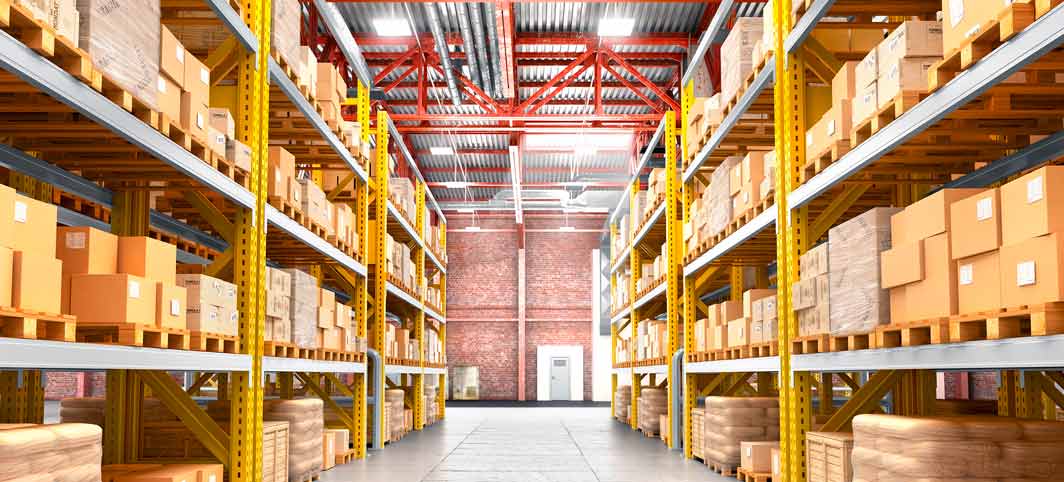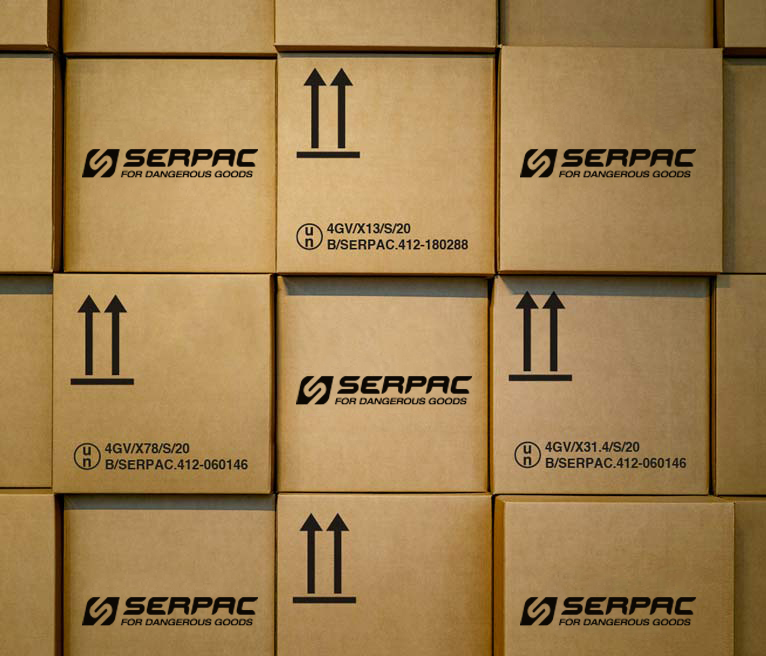
UN certified 4GV Safe & Clean boxes for the transport of dangerous goods:
a choice "without vermiculite"
Types of packaging available on the market to ship dangerous goods are many, as long as valid sets of norms about protection and security are respected, and that the right choice is made according to these regulations. Among all packaging available on the market, very often UN-certified 4GV boxes represent the quickest and most versatile choice thanks to their technical and practical features. This is true for traditional 4GV boxes that use vermiculite as an absorbent material, but it’s even more valid when using Safe&Clean UN-certified 4GV boxes to ship your dangerous goods. Why?
What are UN-certified 4GV boxes?
Let’s start from names, discovering together what UN-certified 4GV boxes are. Well, these are UN-certified boxes, and by “certified” we mean that they have successfully performed specific tests and therefore obtained a specific certification, which may be used for the shipment of objects or inner packaging of any kind for liquid or solid substances of packing groups I, II, III. This is an important shift in perspective for the use of 4G boxes, which might be considered similar, but that can be used only and uniquely together with the inner packaging they have been certified with (aka they have been tested with).
Using a 4GV packaging is sometimes a compulsory choice when quantities or time to realize a customized 4G packaging are not enough. This special “V” packaging was included in the related regulations because inner packaging must be tested with their outer packaging but, as we wrote before, this is not always possible. Another thing to consider is that it is rare (if not impossible) to find 4G packaging, among the ones already available on the market, which has been already tested for your specific inner packaging. Also, about 4G packaging, never trust suppliers who do not inform you about allowed inner packaging: you might face big troubles, without even knowing why!
To comply with the validity of the certification, UN-certified 4GV boxes must be used following the specific instructions written on the test report for what concerns the use of the box, minimum distances to respect between inner packaging and outer box, the bottom and the top of the box, maximum gross weight, sealing type, filling and absorbing material, etc.
Pros and cons of vermiculite inside UN-certified 4GV boxes
The absorbing material which is traditionally used inside UN-certified 4GV boxes is vermiculite. And what is vermiculite, exactly? It is a mineral-based material that, after being modified through a process of exfoliation, comes as scales or grains made of microchannels and closed cells. These features make vermiculite the most used material to fill and absorb since ever. Vermiculite presents a few advantages: it is inert, fireproof, rot-proof, free from any impurity, and sterile.
As it does not solve in water and organic solvents, it is suitable to absorb shocks and liquids, which makes it ideal to fill void spaces inside any packaging. Furthermore, it does not fall into any danger class for the transport of dangerous goods and therefore is not subjected to the related regulations of transports by road (ADR), by rail (RID), by inland waterway (AND), by sea (IMDG), and by air (ICAO-TI / IATA).
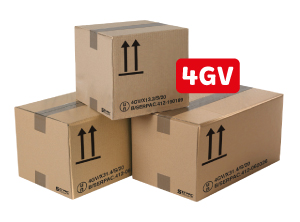
Given for granted the advantages we might enjoy when using vermiculite to ship our dangerous goods, we also need to focus on its disadvantages, which are also linked to the technical features of vermiculite. First, vermiculite is very dusty because of the friction or erosion of the material during transportation: therefore, both senders and receivers, may dirty not only shipped goods, but also themselves, and will have to use PPEs such as glasses or visors and gloves to use it, and above all masks to avoid inhaling the dust.
Other than that, the dust may ruin or dirty inner packaging, making it necessary to use additional PE bags to protect the content. Finally: asbestos alert! Not all types of vermiculite on the market are asbestos-free and may cause irreversible health damages for whoever comes in touch with it. Also, consider that its weight and its volume can raise the costs of shipments.
What are Safe&Clean UN-certified 4GV boxes?
To solve the problems caused by the most popular absorbing material used inside UN-certified 4GV boxes, the Serpac team has created a new line of 4GV boxes that, unlike traditional ones, do not use vermiculite, but are anyway compliant with the law to ship different objects or inner packaging belonging to packing groups I, II, III.
We are talking here about Safe&Clean UN-certified 4GV boxes, unprecedented and still unique on the market. They contain a “vermiculite-free” kit, an innovative system that allows you to pack and ship dangerous goods in a cleaner, faster, and cheaper way.
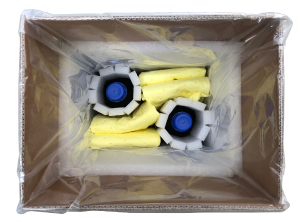
This kit includes SR Foam sheets on the bottom, walls and top of the box to protect the goods from shocks. Kits dimensions may vary according to the size of the box, and more sheets of foam may be included to put the goods on more levels. Also, absorbing pads (number of pads, too, may vary according to the boxes’ size) are useful in case of a possible leaking when shipping liquids of any type, even acid and caustic. In case of any doubt about chemical compatibility, we advise checking the compatibility sheet of the pad or taking a test with a small quantity of the substance.
Technical features of SR foam and absorbent pads
Absorbent pads
They’re ideal to absorb acid, caustic, and corrosive substances, as well as chemical agents and unknown liquids, and therefore respond to the standard of absorbing material to put inside “V” types of packaging. Upper and lower layers of polypropylene Finefibre are thickly interwoven, and therefore the surface of the pad and absorbing liquids promptly. The inside is made of polypropylene fibre Meltblown that guarantees to catch the highest quantity of liquids.
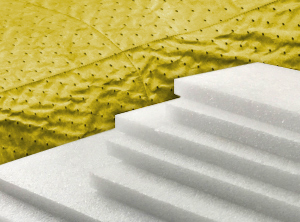
SR Foam
SR Foam does not deform under a heavy load charge and can absorb vibrations and shocks. It can therefore guarantee high standards of safety and protection of goods. It also responds to standards required for V types of packaging about cushioning material. Other than that, SR foam is also flame-retardant, it is very light (allowing a reduction of shipping costs on V types of packaging), it is clean (no need for PPEs), and it is recyclable.
The advantages of Safe&Clean UN-certified 4GV boxes
Safe&Clean UN-certified 4GV boxes have therefore many advantages: they are clean, ready to use and they can reduce shipping costs. About cleanness: eliminating vermiculite means eliminating the dust coming from its erosion: no more PPEs are required to manage the absorbing and cushioning material and no more dusty inner packaging or dusty warehouse. About readiness: Safe&Clean system allows you to package in compliance with the law without having to verify the minimum distances required which is instead necessary when using vermiculite. You just need to follow the instructions of use, using the kit, which is provided with, and you’ll be sure you’re following the valid law. Finally, about shipping costs reduction: the total weight of foam and absorbing pads is lower than the weight of vermiculite. This means a cost reduction for shipments, especially when by air IATA. This is now the end of the introduction of our Safe&Clean UN-certified 4GV boxes. If the descriptions you’ve read so far satisfy you and you want to understand more about the practical use of Safe&Clean boxes, you just need to download the “user manual” and start immediately to ship your dangerous goods cleanly and easily!

